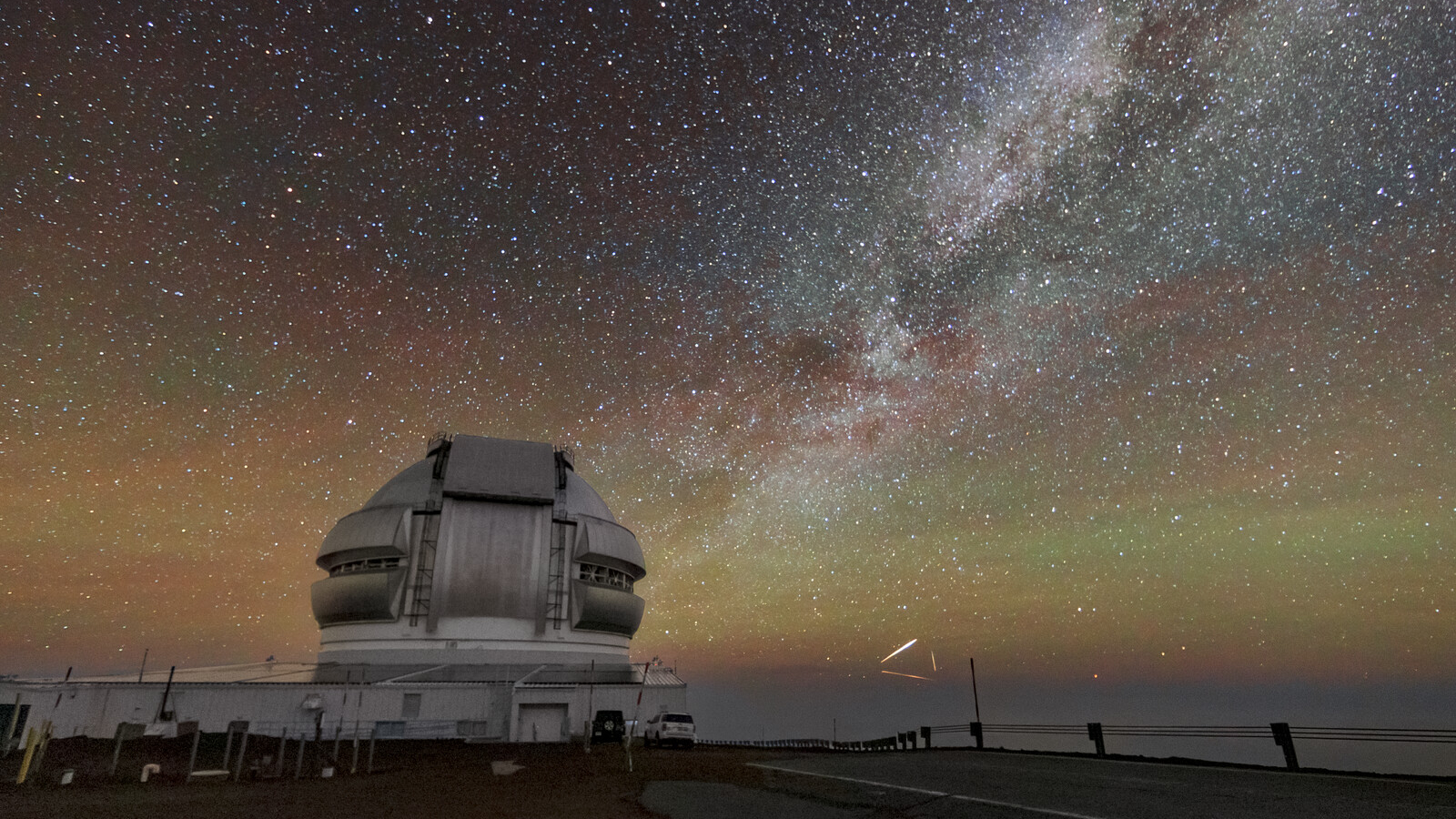The Gemini North Telescope, one half of the International Gemini Observatory, studies the skies above Maunakea, a mountain in Hawai’i. Its twin, the Gemini South Telescope, is based in the Chilean Andes at Cerro Pachón.
What is it?
According to NOIRLab, both Gemini Telescopes have four imagers and spectrographs that view in both optical and infrared wavelengths simultaneously, which are mounted on the back of the telescopes. These instruments work in sync with the telescopes’ guidance systems in order to be able to look deep into the universe.
The Gemini North Telescope is one of several near the summit of Maunakea and it and its twin are two of only a select few observatories that can be operated fully remotely.
Where is it?
At 13,825 feet (4214 meters) of a long-dormant volcano, the Gemini North Telescope is above clouds and light pollution that could interfere with its analysis.
Why is it amazing?
While the Gemini North Telescope may be at a high enough elevation to avoid light pollution, it has another issue that might interfere with its readings: satellite streaks. Because there are more satellites in low-Earth orbit than before, it can be challenging for astronomers to filter out the activity, from these objects. In this image, the long exposure shows three satellites streaking across the sky to form a triangle shape.
Researchers are working to find ways to track these satellites in hopes of making it easier for astronomers to peer into our universe and study the many celestial objects that are there.
Want to learn more?
You can read more about the Gemini Observatory and satellite activity as astronomers continue to use powerful telescopes to look at our night skies.
